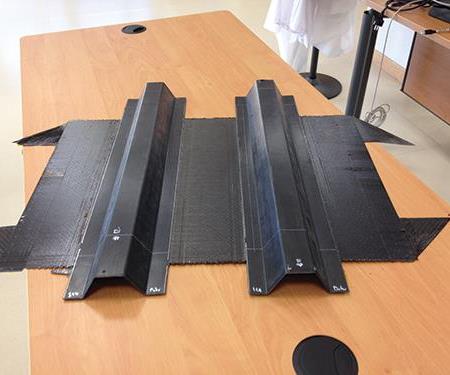Thermoplastic composites in flight ... for decades
Thermoplastic composite airframe components parts have a surprisingly long history. Here's one of the earliest applications.
Today, flying thermoplastic composite flight-critical parts include the main wing leading edges on the Airbus (Toulouse, France) A380 superjumbo passenger jet and the A340-500/600-series airliners that preceded it, as well as the Gulfstream Aerospace (Savannah, GA, US) G650’s rudder and elevators. Aerospace thermoplastic composites application developers include Fokker Aerostructures (Papendrecht, The Netherlands, now part of GKN Aerospace, Redditch, UK) — the key manufacturing partner in the Airbus wing leading edge effort — plus Technocampus (Nantes, France; read more located under “Editor’s Picks” on the top right), Premium AEROTEC GmbH (Bremen, Germany) and DAHER-Socata (Tarbes and Nantes, France), among others.
But thermoplastic composite aircraft parts have accrued some history, too: Applications date back to the US military’s F-22 jet fighter’s landing-gear and weapons-bay doors in the 1980s. And Arnt Offringa, director of R&D at Fokker Aerostructures, recalls that in the early 1990s, Fokker developed a thermoplastic composite outer wing trailing edge skin panel or shroud (two per aircraft, left and right) for the Fokker 50 passenger aircraft.
The panels were located behind the wing torsion box, in front of the flaps and right next to the turboprop engine exhausts (see photo). They were curved parts, 2.15m long by 0.46m wide and made with carbon fiber/ polyetherimide (PEI) prepreg supplied by TenCate Advanced Composites (Nijverdal, The Netherlands). The panels flew on all Fokker 50 aircraft, replacing a more conventional thermoset composite. Says Offringa, “The epoxy-based composite that was used at first did not have the temperature resistance needed, right next to the engine exhaust.”
This short article is a Side Story to a feature article titled, "Thermoplastic wings on the horizon?" To read the main feature, click on its title under "Editor's Picks" at top right.
Related Content
-
Plant tour: Albany Engineered Composites, Rochester, N.H., U.S.
Efficient, high-quality, well-controlled composites manufacturing at volume is the mantra for this 3D weaving specialist.
-
Manufacturing the MFFD thermoplastic composite fuselage
Demonstrator’s upper, lower shells and assembly prove materials and new processes for lighter, cheaper and more sustainable high-rate future aircraft.
-
Bio-based acrylonitrile for carbon fiber manufacture
The quest for a sustainable source of acrylonitrile for carbon fiber manufacture has made the leap from the lab to the market.













